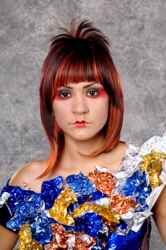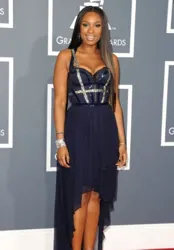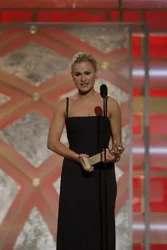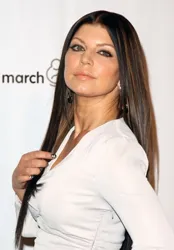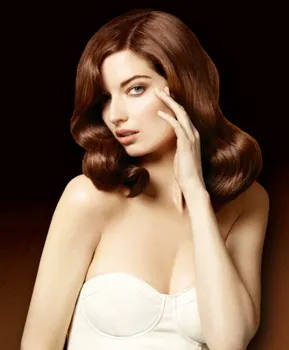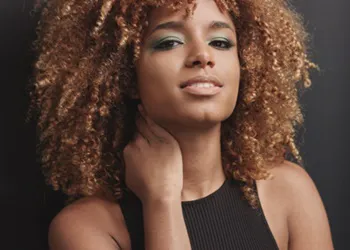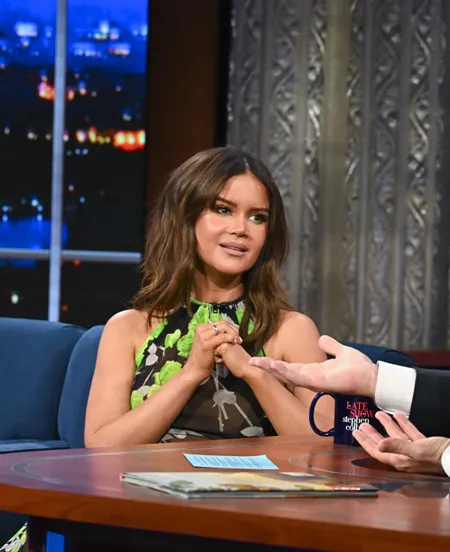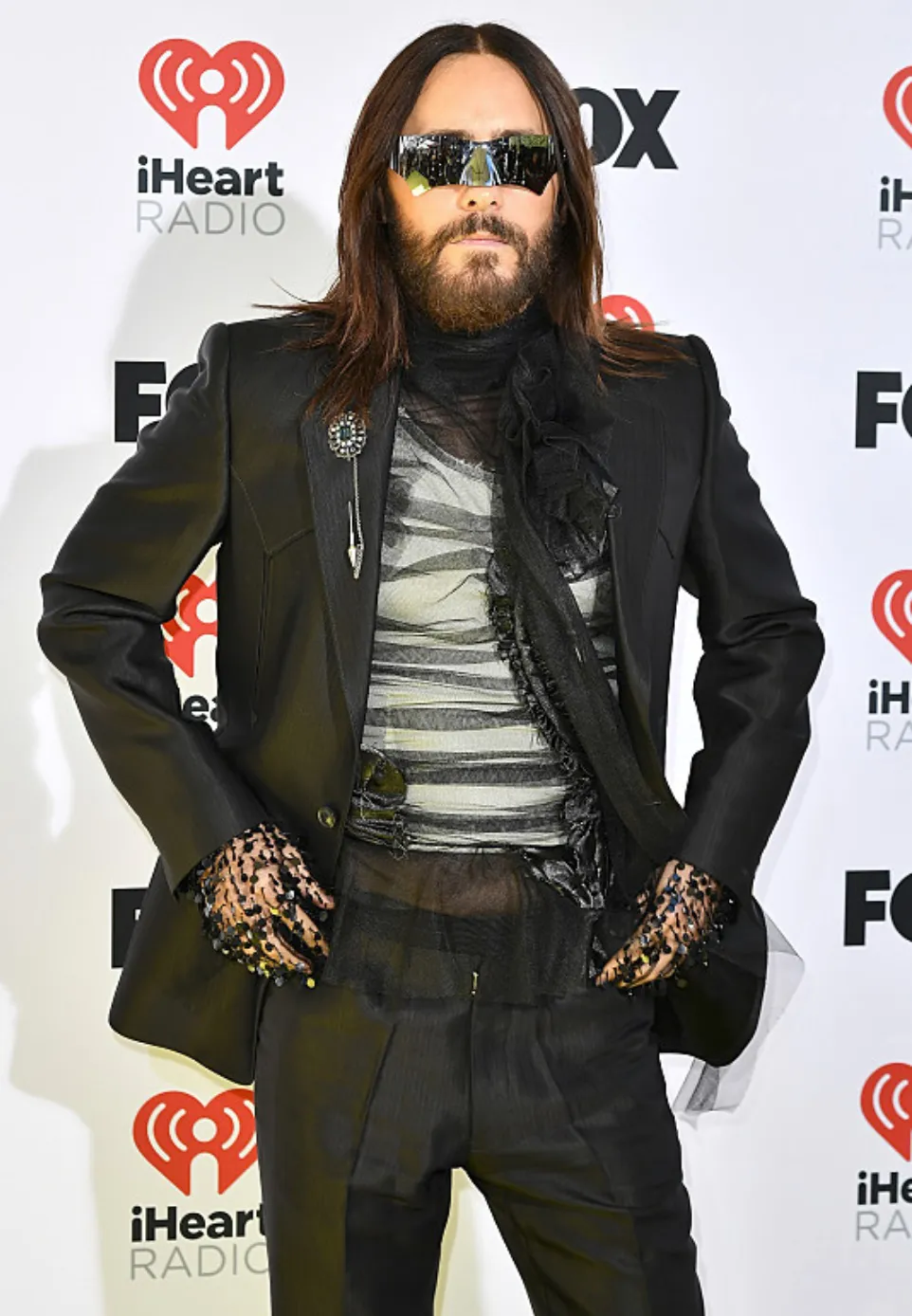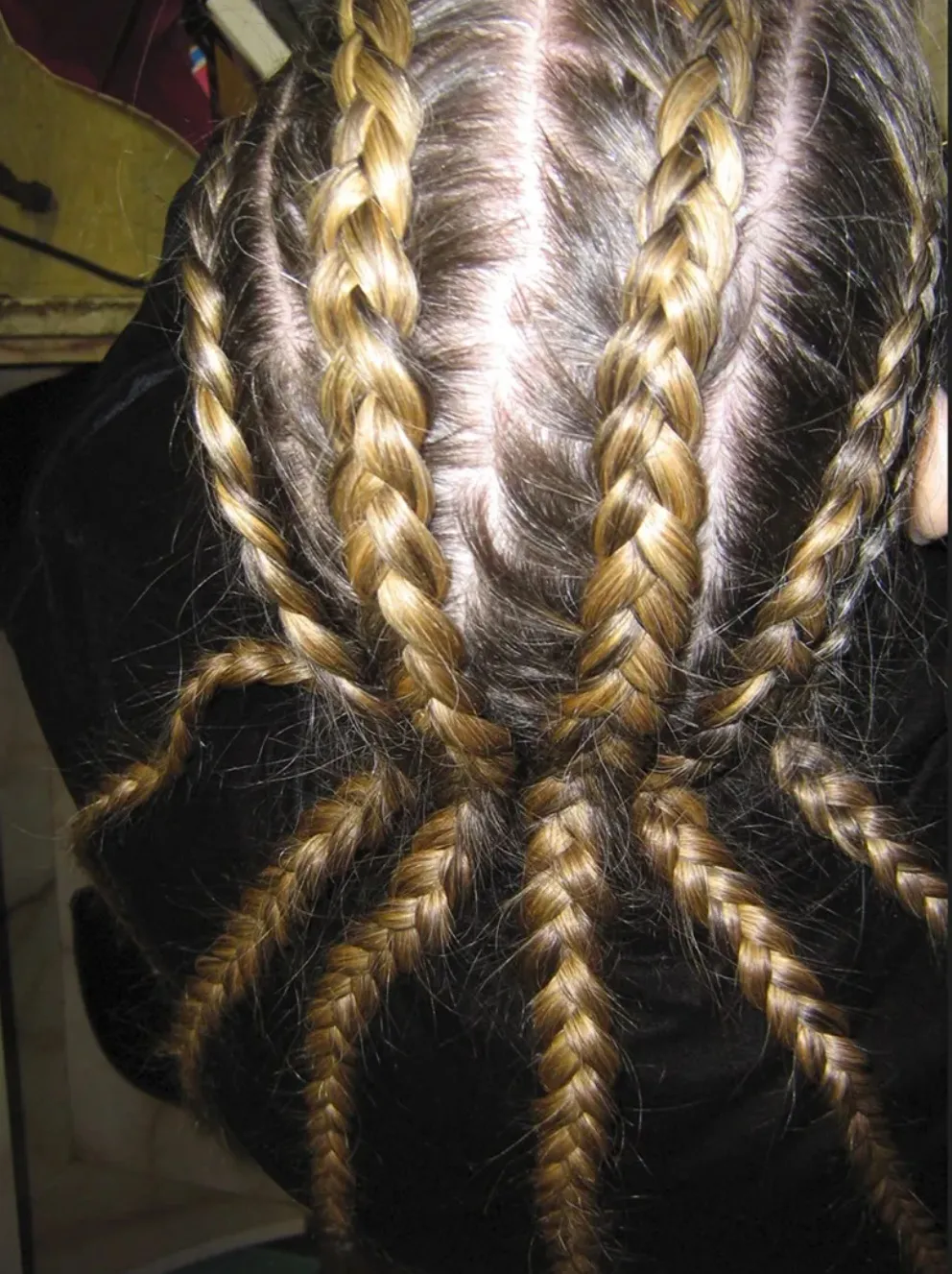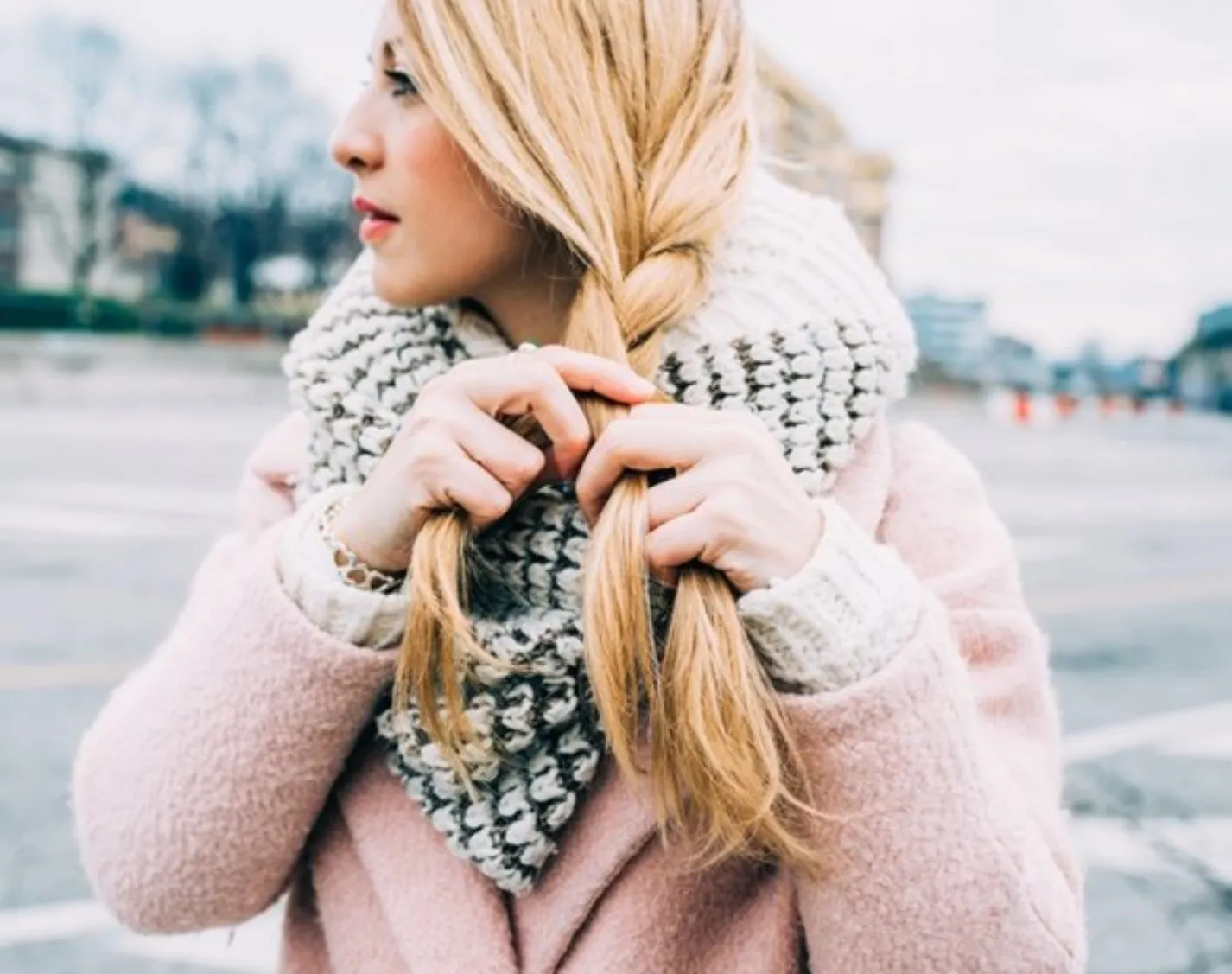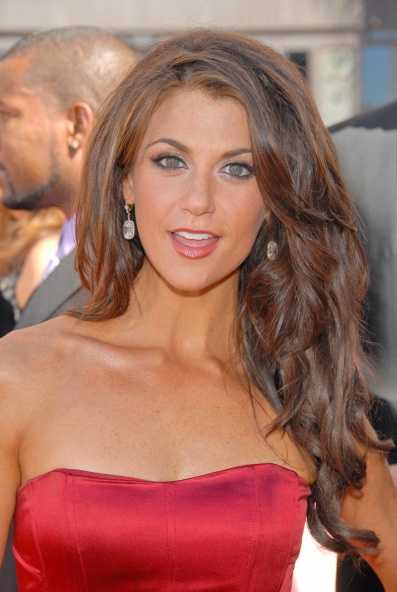
Hair: Air Dry Your Tresses
Introduction
Although it's infinitely much better for you to dry your hair without the blast of a hot blow dryer, in reality, it can be a lot more challenging to get the style you want without resorting to your tried and true method. This is especially true during cold air months when leaving the house with a damp head of hair is not practical. I am a huge fan of air-drying. In fact, if I use a blow dryer it is only on my front bangs with tend to get curly/wavy or only on very special occasions when I want my hair to look super straight. The rest of the time I towel blot my strands with a super absorbent towel, apply my favorite leave-in conditioner such as Phyto 7, Phyto 9 or Robert Hallowell's Love That Shine Treatment Elixer. Recently I have been alternating my leave-in conditioner with the new Back To Nature Chocolate Chip Mint leave-in conditioner. It smells yummy and keeps my hair soft at the same time. Once my hair has been blotted dry and I have applied the leave-in conditioner of my choice, I carefully wrap my strands into a fat knot or bun and attach a hair friendly condor clip or similar. I let my hair air dry for several hours. When I remove the clip I have instant waves and shiny strands without the potential drying damage of a blow dryer. Air Dry With Great ResultsBelieve it or not, if you watch closely the next time you are in the salon, you may notice that your hairstylist uses their blow dryer as little as possible. Why? Well other than the fact that concentrated heat directed towards a select section of strands may cause them to dry out and even potentially singed, it can actually take a lot of time for your hairdresser to focus only on blow drying your strands. To minimize heat damage and maximize their styling time, many hairdressers will wait until the very last minute to dry your strands after they have cut it.
FAQs On Air DryingDepending on the length and thickness of your strands, they make dry fairly quickly with the air-dry method. Tresses that are stick straight, fine or thin will typically dry more quickly than longer strands that are thick, curly or wavy. It is also generally true that hair tends to air-dry faster in the Summer months than the Winter months. If you decide to air-dry in the Summer, be sure to use styling products with built-in sunscreens to prevent sun damage. Keep in mind that humidity may also affect the speed at which your hair naturally dries. Other factors that will determine how fast your tresses air dry include whether your water is soft or hard, the type of shampoo and conditioners your use and whether your final rinse is with cool or warm water. So how do you take advantage of the bountiful benefits of air-drying at home? Spring for a super absorbent towel.Avoid any vigorous rubbing of wet cuticles by gently blotting hair with an absorbent towel designed to suck up excess moisture. Not only are your strands at their most fragile when wet, rubbing damp strands will ruffle the cuticle encouraging frizziness and split ends. Gently blotting excess water drippage instead of vigorously rubbing will encourage a softer, less rough feeling. There are a variety of towels that are designed to help absorb moisture and dampness. Some are designed with waffles and others make use of different weave patterns. A really plush beach towel is often a good choice as well. Find the type of towel that works best for your hair and budget. Create random waves - twist & clipTry my trick of twisting hair into a bun and let it air-dry. Detangle damp hair completely. Apply any desired styling products such as mousse, gel or pomade. Twist strands in a circular motion until all the hair is tucked into the bun. Secure with a condor or similar salon style clips. When hair is dry, remove clips and you will have cascading curls and waves. Although large barrettes can also work, be sure that they are "hair-friendly" and will not snag delicate strands. Plan for ringlets or spiral curlsSet damp strands on a variety of different braids to create ringlets or spiral style curls. Or opt for setting slightly damp strands on pin curls, rag rollers or even traditional sponge rollers to create a more uniform curl of wave pattern. Bend straight strands into S curvesNaturally straight strands will generally air dry straight with minimal intervention. If your strands are stick straight but you wish to air dry with resulting texture, experiment with pin curls or old fashioned salon clips positioned on damp strands to create retro S or finger waves. Add volume naturallyBuild in natural volume and fullness by using your fingers to comb, fluff and lift while directing your strands into the opposite direction that it normally lays. Use a big salon or condor clip without teeth to hold hair into a volume enhancing position. Remember that any clips with teeth or ridges may create wrinkles or marks in wet strands. Finger combing and fluffing will actually speed up air-drying times and will help add volume if done correctly. Obviously if you must leave the house, this plan doesn't work well. However, you can get volume by using a pick or your fingers to gather damp strands into a top of the head pony and sleeping on it. Be sure that if you try the pony trick that you only use a "hair friendly" Blax or bungee cord to protect hair from ripping or tearing. When you remove the ponytail, bend over at your waist and flip your hair over while using your fingers to fluff your strands encouraging lift at the roots. Gently flip hair back and use fingers to carefully arrange into your desired style. Use compatible air-drying productsMatch the conditioning treatments with your own type, texture and condition of hair. Baby fine tresses that are mostly straight will usually respond best to the lighter conditioning and styling products such as mousses and sprays. Curly or wavy strands that are naturally dry or chemically treated respond better to moisturizing styling creams, pomades and gels applied to the middle or ends of the hair. Be care not to weigh down ultra curly or fine strands with heavy conditioning products. If your strands tend towards oiliness, apply conditioning products only to the most damaged sections of your strands or just at the tips of the cuticles. Remember that less is always more. For extra control of wild strands, smooth on a small quarter-size dab of leave-in conditioner once hair is 90% dry. Practice product layeringThe first time I saw my stylist creating a product mixture by dabbing into several different pots I was surprised. In essence she mixed a dab of gel with a tiny bit of shine serum with amazing results. Just like great makeup artists resort to blending their own eye shadows and lipsticks, expert hairdressers have learned the art of product cocktailing with amazing results. Try your own version of product cocktailing or blending by mixing your favorite styling products together to get maximum results. I personally mix a little of my Phyto 7 or Phyto 9 with a dab of Phytodefrisant when I know that the weather is going to be humid or I want zero risk of frizz. Play with mixing gels with creams that will create air-dryed texture and smoothness at the same time. Or try a variety of products blended together. Block frizz developmentOne of the major complaints with air-drying strands is that when strands are not controlled by a blow dryer they develop more frizz. With a little advance planning you can beat back the frizzies with the appropriate conditioners and frizz fighting products. Not only will the right hair care products help prevent air-drying frizzy side effects, they will add shine, softness and just the right amount of sassy bounce and movement. Try my trick of using Phytodefrisant or a similar product applied to damp hair. I have great success using Phytodefrisant either standalone or mixed with my favorite Phyto 7 or Phyto 9. Finish with soft productsAir-drying strands not only protects your strands from heat damage, it creates a completely different texture and finish. Therefore, instead of applying your normal hairsprays, go with just a tiny dab of a shine product that is more compatible with your au natural texture. Less heat is moreDuring the times you wish to set your hair but don't wish to leave the house or sleep on a wet head, sit under a hood dryer to remove remaining moisture. Hood dryers are less damaging for strands because the heat is diffused over a larger area and can be set on a low or medium setting. Remember that if you use a hood dryer, to avoid sitting directly against the heating coils or hottest areas of the hood. When you must blow drySince it is known that tress damage usually occurs as a result of hot tools, save blow drying sessions for special hair events when you really want to control your strand's ultimate texture. When you must use a blow dryer, follow these helpful hints to minimize damage:
Other air drying tidbitsIf air-drying appeals to you but you are a novice, embrace this type of hair drying as a new fun filled experiment. Take the opportunity to try different styling products that you might normally avoid when using your blow dryer. Going cold turkey from the blow dryer may be too scary for some. Consider using some of the tips mentions above to remove the bulk of moisture and then finish with a kinder, more gentle blow dryer such as the new ceramic, ionic models. Or invest in a hood style dryer and "cheat" by using the dryer for the final stages of your drying cycle. Combining air-drying with a hood or blowdryer for the final step will minimize heat damage while giving you the opportunity to control your ultimate hairstyle. If you have bangs or roots that take longer to dry, consider using a blow dryer to "spot" dry only limited sections of your stands and let Mother Nature dry the rest. Although you may be tempted to speed up your air drying by sticking your head outside a moving car window, in front of an industrial hand dryer in an airport or dorm room or by a fan please resist. Not only will those methods potentially tangle hair, they will often encourage split ends. If you must stick your head under an industrial hand dryer run for your blow dryer, which is less of a risk. SummaryBottom line, give au natural drying a chance. You may be amazed at how much better your tresses behave over the long haul. Social Media Network InformationPlease follow me on Twitter at: http://Twitter.com/HairBoutique. I look forward to meeting new Visit us at Hairboutique.com located at: http://www.HairBoutique.com, on Facebook, MySpace and YouTube. Thank you for visiting us at The HairBoutique Blog and for leaving your comments. They are very much appreciated. We apologize in advance but must remove any direct advertisements or solicitations. - Revised Date: 06/16/11 | |||
| If you want to talk more about this or other hair care articles on HairBoutique.com or anywhere else, please post a message on HairBoutique.com's Hair Talk Forums.
|
Social Media Network Information
Please follow us on Twitter at: https://Twitter.com/HairBoutique. I look forward to meeting new people from all walks of Twitter and learning from their Tweets.


